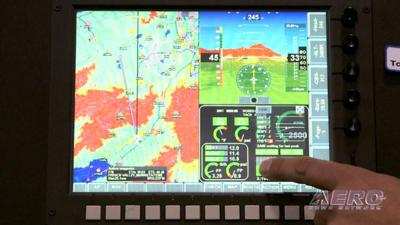Fri, Jan 03, 2020
But DOT OIG Finds The FAA Must Address Airspace Access Issues
The DOT Office of Inspector General (OIG) has released the findings of an audit that had been requested by then-Chairman Bill Shuster (R-PA) and Frank LoBiondo (R-NJ) when they led the House Committee on Transportation and Infrastructure and its Subcommittee on Aviation.

Citing concerns about whether operators will meet the 2020 deadline, the then-Chairmen of the House Committee on Transportation and Infrastructure and its Aviation Subcommittee requested that the OIG provide information regarding equipage rates for ADS-B and other NextGen technologies on air carrier and general aviation aircraft. Accordingly, our audit objectives were to (1) determine the equipage rates for ADS-B and other NextGen-enabling technologies on commercial and general aviation aircraft, (2) ascertain the reasons behind aircraft operators’ decisions to equip or not equip with these technologies, and (3) assess FAA and aircraft operators’ plans to meet the 2020 ADS-B Out equipage deadline.
In the audit, the OIG found that ADS-B Out equipage rates increased as the 2020 deadline approached, with other equipage rates varying depending on the NextGen technology. In addition, operators are installing ADS-B Out primarily due to the mandate but also consider financial and operational factors when equipping with NextGen technologies, such as potential benefits. Finally, most commercial and turbine-powered general aviation operators who will fly in ADS-B Out airspace planned on meeting the 2020 deadline. However, FAA has not finalized procedures needed by non-equipped operators to access ADS-B Out airspace.
The OIG made three recommendations to the FAA concerning having the necessary systems and procedures in place so operators can access ADS-B Out required airspace. The FAA concurred with two of the recommendations and provided appropriate planned actions and completion dates. It did not concur with one recommendation to analyze the feasibility of developing automated systems to provide operators with more timely information regarding GPS outages or degradation. The Agency concluded that developing these additional systems is redundant and an inefficient use of resources. Based on its response, we believe that the FAA has assessed the feasibility of developing automated systems as noted in recommendation 2. Therefore, this recommendation is considered closed.
(Source: DOT OIG. Image from file)
More News
Circle To Runway (Runway Number) Used by ATC to inform the pilot that he/she must circle to land because the runway in use is other than the runway aligned with the instrument appr>[...]
Aero Linx: National Aviation Safety Foundation (NASF) The National Aviation Safety Foundation is a support group whose objective is to enhance aviation safety through educational p>[...]
At Altitude Of About 250-300 Ft Agl, The Airplane Experienced A Total Loss Of Engine Power On November 6, 2024, at 1600 central standard time, a De Havilland DHC-1, N420TD, was inv>[...]
From 2009 (YouTube Edition): Three Hour Flight Was 'Flawless' -- At Least, Until Mother Nature Intervened For anyone who loves the aviation business, this was a VERY good day. Afte>[...]
Also: AMA Names Tyler Dobbs, More Falcon 9 Ops, Firefly Launch Unsuccessful, Autonomous F-16s The Air Force has begun ground testing a future uncrewed jet design in a milestone tow>[...]
 ANN's Daily Aero-Term (05.05.25): Circle To Runway (Runway Number)
ANN's Daily Aero-Term (05.05.25): Circle To Runway (Runway Number) ANN's Daily Aero-Linx (05.05.25)
ANN's Daily Aero-Linx (05.05.25) NTSB Prelim: De Havilland DHC-1
NTSB Prelim: De Havilland DHC-1 Classic Aero-TV: The Boeing Dreamliner -- Historic First Flight Coverage
Classic Aero-TV: The Boeing Dreamliner -- Historic First Flight Coverage Airborne-NextGen 05.06.25: AF Uncrewed Fighters, Drones v Planes, Joby Crew Test
Airborne-NextGen 05.06.25: AF Uncrewed Fighters, Drones v Planes, Joby Crew Test



